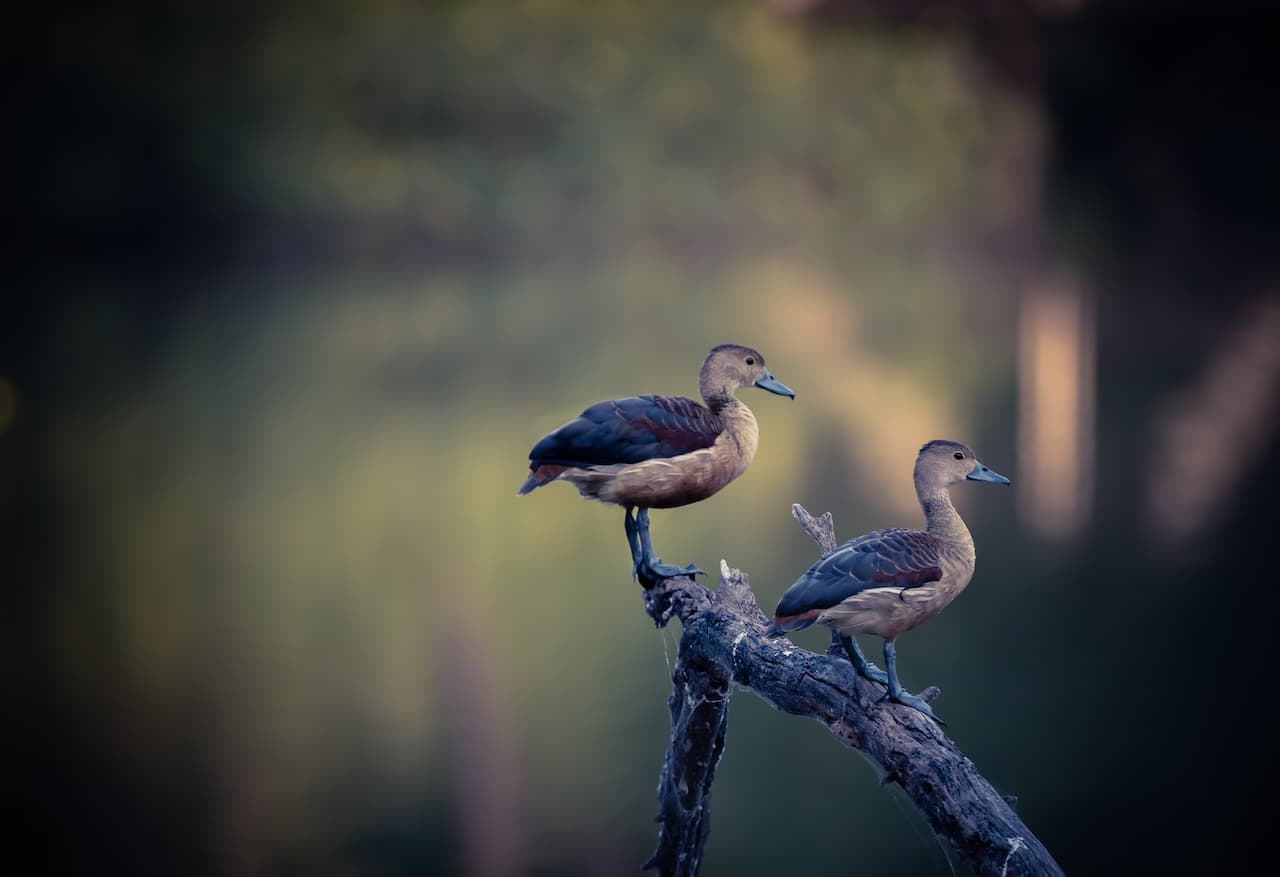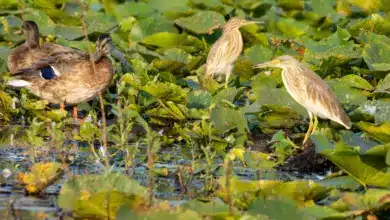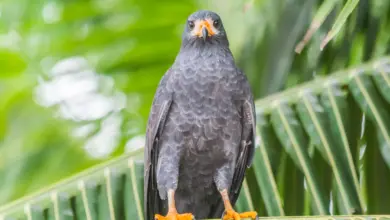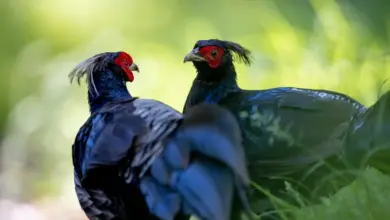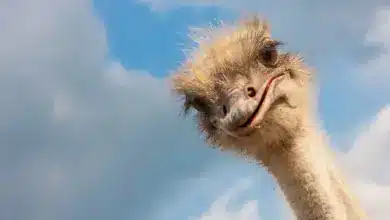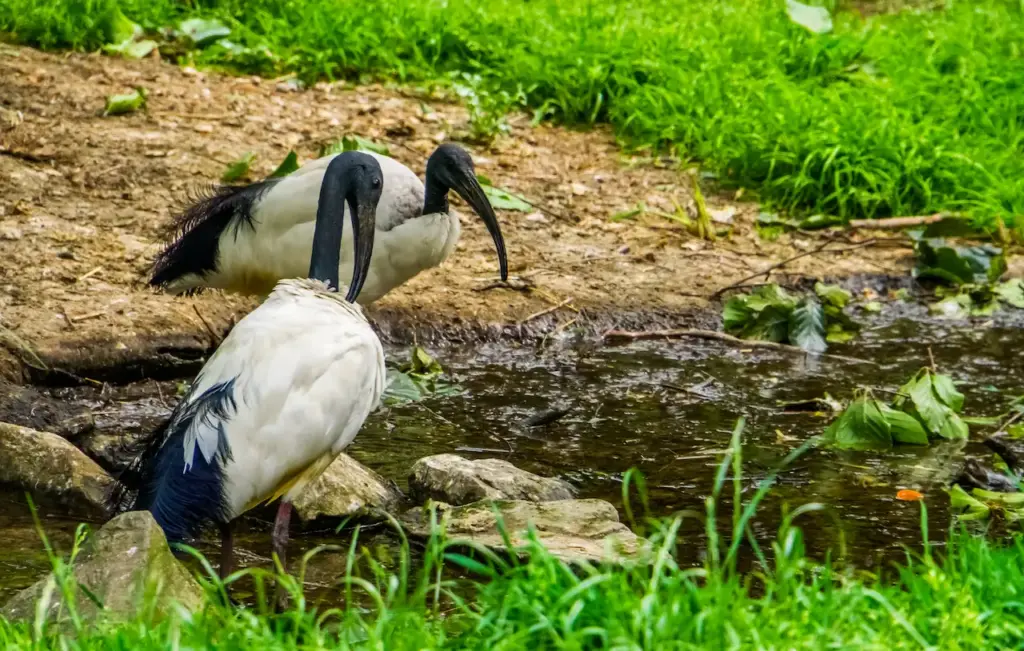
African Sacred Ibis Breeding / Nesting
Sacred Ibises nest in tree colonies, often with other large wading birds such as herons.
Their large stick nests are typically placed in a baobab.
The typical clutch consists of 2 – 3 eggs.
African Sacred Ibis Diet / Feeding
It feeds on various fish, frogs, small mammals, reptiles, and smaller birds as well as insects.
They survive winters in temperate regions by feeding at rubbish dumps.
African Sacred Ibis Description
The adults measure, on average, 68 cm in length.
The plumage is mostly white, except for the blackish rump and black rear border on the wings that can be seen in flight.
The featherless head and neck, thick curved bill, and legs are black.
Males and females look alike.
Juveniles can be identified by their dirty white plumage, smaller bills, and, unlike the adults, they have some feathering on the neck.
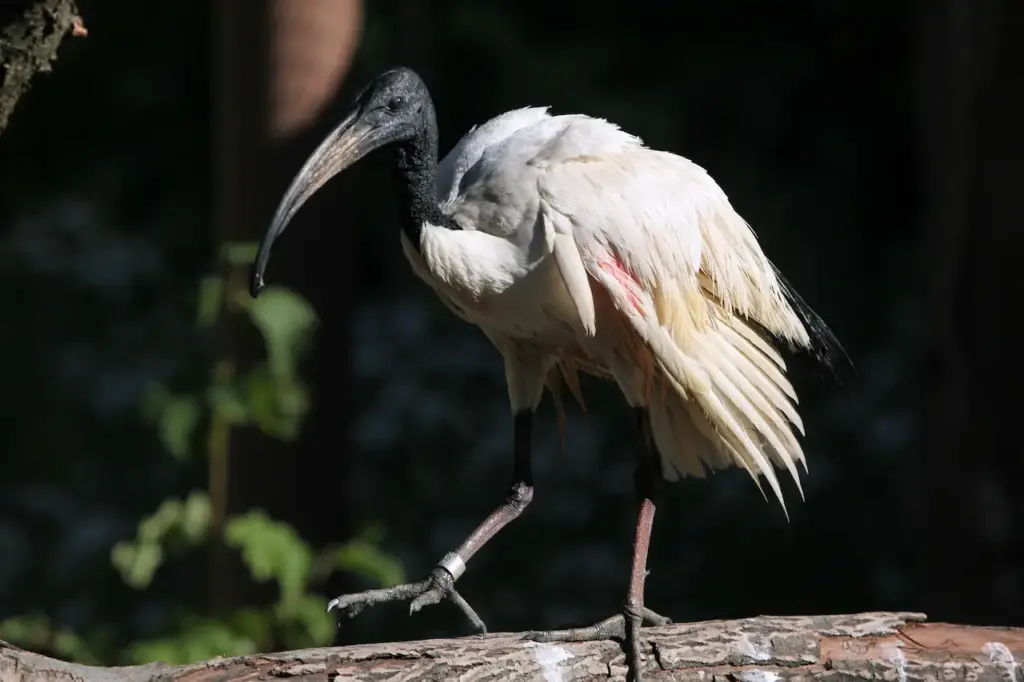
African Sacred Ibis Calls / Vocalizations
Sacred Ibises are mostly silent, but occasionally some croaking sounds can be heard.
Species Research by Sibylle Johnson
Please Note: The articles or images on this page are the sole property of the authors or photographers. Please get in touch with them directly concerning any copyright or licensing questions. Thank you.

